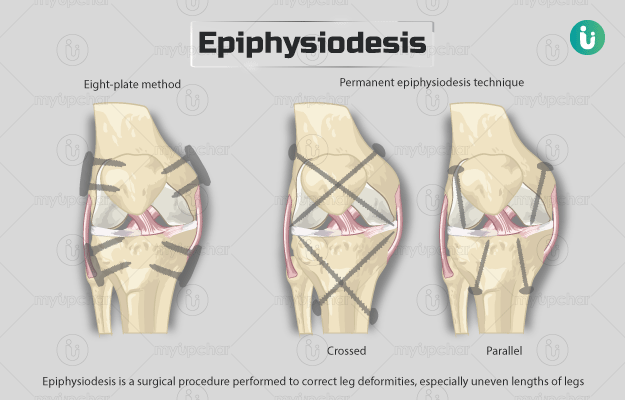Summary
Epiphysiodesis is a surgery commonly performed to treat variations in limb length and some deformities of the leg.
The knee joint has growth plates around it that work towards increasing the length of the leg during a child’s growth and development stage. However, certain conditions cause one leg to grow longer than the other one or cause the knees to deviate at an angle.
Epiphysiodesis helps restrict the growth in the longer leg to allow the smaller leg to grow to the same length with age. The surgery is usually performed during the mid to late adolescent years. It is mostly done under general anaesthesia so that the child will be asleep/unconscious during the procedure. There are various methods to perform this epiphysiodesis, among which, the eight-plate method is the most commonly performed one. In this method, the surgeon inserts a metal plate above or on both sides of the growth plate (of the longer leg) to prevent its growth. The child will be discharged on the same day of the procedure. However, he/she will have to visit the surgeon in about two weeks for a follow-up assessment.






































